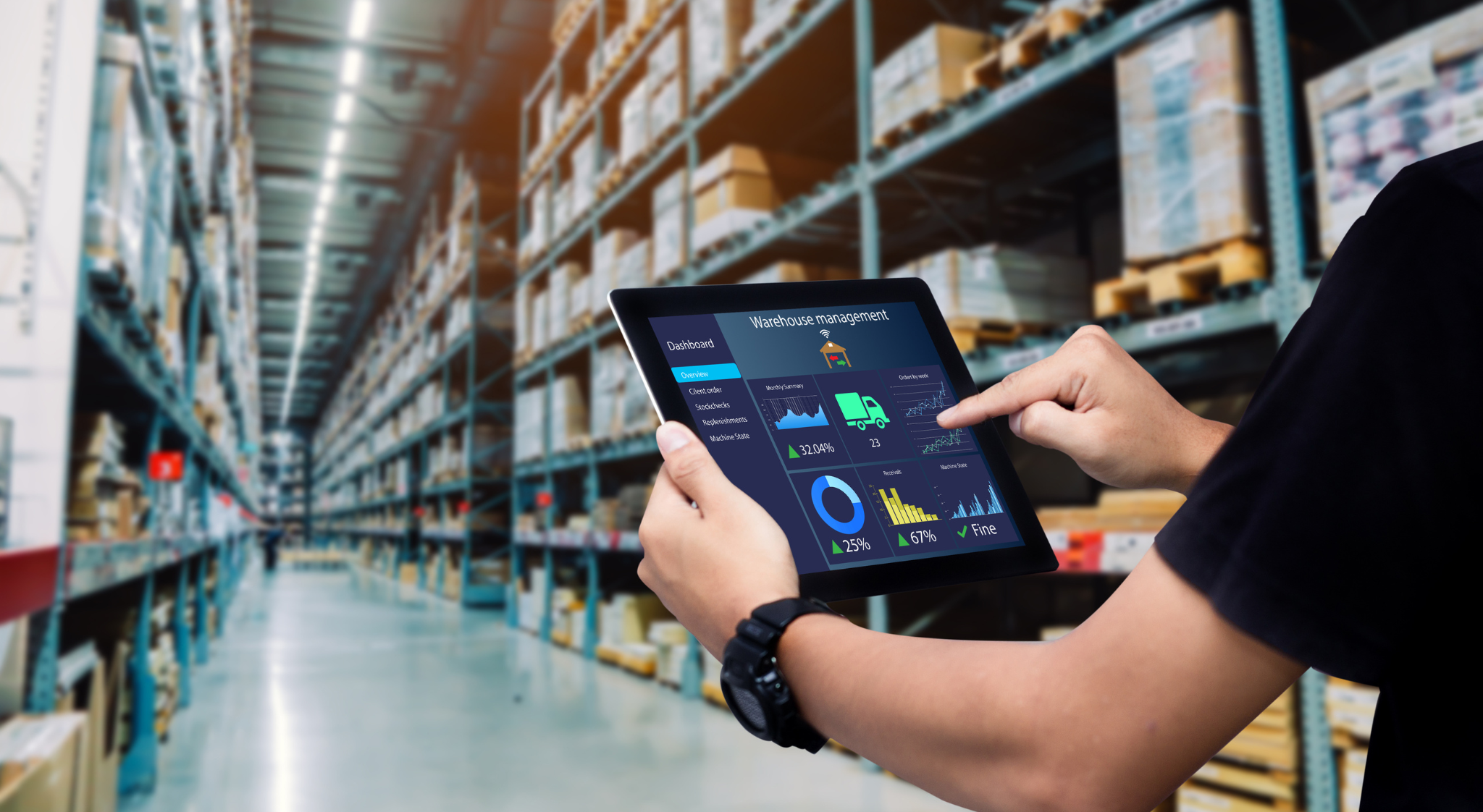Undertaking a CRM / ERP migration project can be a daunting task and often carries high risk. During a major tool migration, executives often spend considerable time researching the best approach to minimise risks and maximize productivity . However, these migrations present challenges such as data inconsistencies, the need for complex data cleaning and mastering, and the requirement to configure new processes to support the transition.
In the past, digital transformations approached each project individually and in a siloed fashion, but with the evolution of cloud technology and increased familiarity with migration challenges, leveraging data processing capabilities for business intelligence has proven to be highly beneficial.
In this whitepaper, we will discuss why at Kleene.ai we believes using a Cloud Data Warehouse is a powerful and effective way to ensure timely execution of migration projects, whilst removing regularly seen challenges.
We will discuss key challenges including:
- Project Scoping
- Retaining historic data
- Vendor bias
- Data quality
- Ecosystem of business tools
- Upskilling on new technology
- Avoiding overloading the operational tool requirements with analytical workload

Introduction
Migrating a major CRM or ERP system can be an overwhelming task, given the complex intersection of technology platforms, operational processes, and tight commercial timelines. These projects are often fraught with challenges that can lead to significant delays and increased costs for organizations. The stakes are high, and the risk of disrupting business operations during the transition can make the process daunting for many companies.
COOs and VPs of Sales typically spend months meticulously researching the right tools to support their business growth and operational needs. However, despite this extensive preparation, they often find themselves struggling to fully and accurately assess the complexities involved in the next critical step: the ERP migration from the legacy system to the new one. The intricacies of data integration, system compatibility, and the potential for operational downtime during the migration are just a few of the challenges that can make the process seem insurmountable. Consequently, some organizations choose to soldier on with their existing systems long past their optimal lifespan, primarily to avoid the risks associated with ERP migration. Yet, as technology evolves and business needs change, there inevitably comes a time when migration is not just advisable but necessary to maintain competitiveness and efficiency.
Kleene.ai offers a powerful solution to ensure the timely and successful execution of CRM and ERP migration projects by leveraging the capabilities of a cloud data warehouse. This approach not only simplifies the migration process but also helps organizations overcome the major barriers that typically hinder successful transitions. By centralizing and streamlining data management, a cloud data warehouse provides a stable and scalable foundation that mitigates the risks associated with ERP migration. It allows for seamless data integration, reducing the likelihood of errors and ensuring that all critical information is accurately transferred to the new system.
Time and again, we have seen that utilizing a cloud data warehouse during ERP migration leads to smoother project execution, with fewer unexpected issues, a better ability to react to changes, and empowered teams that can more effectively steer the direction of the migration. The centralized nature of a cloud data warehouse offers a clear and unified view of all data, making it easier to identify and address potential challenges before they escalate. Moreover, this approach enhances the agility of the migration process, enabling organizations to adapt to evolving requirements and unforeseen circumstances with greater ease.
A cloud data warehouse is not just a tool for data storage; it is a strategic asset that significantly enhances the success of CRM and ERP migration projects. By reducing complexity, improving data accuracy, and enabling more effective project management, it ensures that organizations can transition smoothly to new systems, minimizing disruption and maximizing the benefits of the migration.
Migration Challenges
Based on 15 years of experience working with our customers on CRM / ERP migrations, we have broken down the major challenges and how we’ve helped offset these:
Project scoping
Scoping is the province of the business analysts, where in the best case scenario has migrated between the two systems before. Even then, understanding custom fields, replicating logic and reconciling data to a new system can be both time consuming and challenging. Each system must painstakingly be configured for your business, with data loaded from the old system and remapped into the structure the new system requires, and then the business logic governing how the data is processed must also be translated.
Kleene accelerates this process by extracting all the data from legacy systems and loading it into a cloud data warehouse. This would provide all your data at hand to analyse, clean, and explore. Once the data from your legacy system is ready, you can load it to your new system in a sandbox environment to rapidly evaluate its quality.
Remodelling data from the old model into the new systems model is a breeze thanks to Kleene’s simple to use, data modelling SQL based transformation tool. This significantly speeds up planning and de-risks the project early. It also allows rapid iteration and remodelling should the requirements change which can often be either a significant cost of delay or result in implementing systems which are suboptimal due to issues being discovered too late in the process.
Retaining historic data
Retaining historic data is often something that is a casualty to migration projects. Either, the new system imposes limits (hard storage limits, cost limits or performance limitations), or in the interests of streamlining delivery, anything not on the critical path is discarded. Here’s again where a cloud data warehouse powered by Kleene can play incredibly well with systems migration. You can keep all your historical data in the warehouse, optimised for vast storage at extremely low cost ($0.02 per gigabyte per month). This frees you to configure the new system how you choose, and not rack up hefty storage bills. You can also easily produce unbroken reporting by using Kleene’s SQL data modelling capabilities, used to bridge the switch.
Vendor bias
Vendor bias is something we regularly see impacting solution rollouts. Often, the vendor specialists are familiar with their own CRM/ERP system, and therefore propose routes they are aware of. A lot of the time, this results in suboptimal outcomes. Before engaging with a vendor, it’s important to ensure you have access to all your legacy data and knowledge of the data availability and quality. This will allow you to push back on one track approaches proposed.
Offloading BI to the BI tool
While CRMs and ERPs are often promoted as the ideal solution for a centralised “single source of truth” and reporting hub, this approach brings forth two significant problems in practice. Firstly, it introduces additional scope overhead to an already complex project, increasing the chances of errors and delays. However, the primary issue lies in the fact that these tools are not specifically designed for analytical and reporting workloads. Consequently, incorporating new data sources into the reporting layer becomes costly and time-consuming. Moreover, as data scales to substantial volumes, these tools lack the inherent ability to process it efficiently, leading to added complexity and increased costs.
By transferring the burden of business intelligence to a data warehouse and dedicated reporting tool, you can have confidence in the rapid integration of new data types. This approach ensures that data volumes do not impede the speed of reporting, enables swift and effortless analysis using purpose-built tools, and prevents overloading of operational systems with additional workloads.
Data quality
Data quality issues are the bane of migration projects. Often your existing CRM or ERP has had a series of reconfigurations and has grown organically around your team. This results in data with systemic breaks, messy hacks and often confusion on what functionality has been built and how it works.
Digging into the data underpinning the system can quickly produce answers to implementation details. Kleene extracts and loads all the data, regardless of duplication, due to near-limitless storage in a cloud data warehouse. The data is then cleaned and applied rapidly using the powerful processing engines designed to crunch billions of records in seconds. Cloud data warehouses are optimised for exactly this purpose, and by bringing this tool to bear you will see incredible gains in data quality.
Ecosystem of business tools
The interfaces to other tools in the business are increasingly a consideration when migrating systems. A modern migration approach not only has to consider the system itself, but also the ecosystem of other tools in the business and how your new system will plug into them. Whether it’s an old integration or new functionality you want to unlock by plugging in key operational platforms, the complexity rapidly rises. The warehouse can serve as a testing layer for this as the data can be available via the warehouse.
Many companies are now using the warehouse as a central layer for mastering data, rather than trying to maintain comprehensive mastering across all systems. Realtime point to point data feeds will continue to require direct connections between systems, but most use cases do not require this. Using the warehouse as the central source of truth allows a leaner approach, with less technology build. This results in faster projects and less ongoing maintenance expense as the more point to point integrations you have, the more you have to configure when a system changes.
Upskilling on new technology
Upskilling on new technology is part and parcel of migration projects for your team. It’s crucial to have knowledgeable experts within the organisation involved in the project. Operations teams who typically plan data team access as the final step, instead can become accelerated by unlocking the knowledge of the people in the organisation who already see this data and work with it. Kleene’s SQL only approach, your existing teams can be productive on day 1. Another huge gain is that your existing business intelligence and reporting tools will plug natively into the cloud data warehouse, allowing another vector of evaluation, rapidly and cost effectively. This is especially useful to have in your arsenal when being upsold the new systems, being able to use your existing reporting layer can save a huge amount of time and cost in retraining.

Key features of the cloud data warehouse
At this point you’ll see that Cloud data warehouses offer significant advantages for migration projects. To better understand the rationale, it’s important understanding what modern cloud data warehouses are capable of doing. It’s not just a case of on-premise systems moved into the cloud so less management overhead. These systems are optimised to process large data volumes easily. By large, we mean crunching billions of rows or gigabytes of data in seconds. We have some more technical articles on how this is achieved, but suffice to say that when we work with teams moving from traditional data warehouses to the modern cloud warehouses, they are blown away by the speed and efficiency. The popularity and success of these systems (Redshift, BigQuery, Snowflake, Databricks and so on) is as a result of their power and efficiency in dealing with all manner of data processing challenges.
All this goes to reduce the cost of remodelling data. Gone are the days of extensive teams of expensive DBAs (Database Administrators) spending ages fine tuning data models to squeeze performance gains and requests taking forever as a result. Previously, programmers could not afford to focus on customer experience. Modern cloud data warehouses liberate teams to focus on getting value from data, without worrying about storage and compute optimisation.
Where does Kleene fit into this?
As an end-to-end platform, Kleene operates on top of your warehouse, facilitating the extraction of data from your systems and loading it into the warehouse. It serves as the transformation and orchestration layer, executing and optimising the cleaning and processing pipelines. Additionally, Kleene can also help you to visualise the data through your preferred business intelligence tool or using Kleene Data Models and outcomes.
By adopting a low-code approach, Kleene significantly accelerates the time to achieve business value. High levels of automation, tool consolidation and using the skills of your existing teams are all ways Kleene has been engineered from the ground up for speed and ease of use.
Kleene.ai to help with CRM and ERP migration?
At Kleene.ai we offer several compelling reasons for choosing us as a solution for CRM and ERP migrations:
Built for Analytics
Kleene.ai ensures that insights are powered by an analytics platform, enabling organisations to unlock the full potential of their data.
AI Ready
Kleene.ai helps organisations prepare their data for AI applications, allowing them to leverage the power of artificial intelligence for enhanced decision-making.
SQL Native
With a simple SQL-based infrastructure, Kleene.ai minimises maintenance and resource requirements, making it easy for teams to work with data.
Out-of-the-box Connectors
Kleene.ai provides over 600 connectors, allowing organisations to easily access new data sources and integrate them into their systems.
Automated Transformation:
Kleene.ai simplifies the technical requirements for working with data, automating many processes and reducing the burden on teams.
Data Interactivity:
Kleene.ai enables users to work with their data and push it back to the operational systems, facilitating seamless data integration and collaboration.
Automated Data Processing:
Kleene. ai’s automated dependencies enable significant cost savings and faster processing times, improving operational efficiency.
Simple, Flexible, and Predictable Pricing
Kleene.ai offers unlimited use of their platform with no cost per seat. This allows organisations to make accurate annual cost predictions and ensures ease of budgeting.
Experience Supporting Migration Projects
Kleene.ai team of data specialists, professional services, and customer success experts are dedicated to supporting organisations throughout the migration project, ensuring a successful outcome.
Conclusion
Undertaking CRM and ERP migration projects can be challenging and risky. Fortunately, leveraging a cloud data warehouse can address these common obstacles and ensure the successful execution of migration projects.
By utilizing a cloud data warehouse, organizations can overcome challenges related to CRM and ERP migration, enabling rapid integration of new data types, efficient scalability, and reduced complexity and costs.
Kleene.ai, as an end-to-end platform, plays a crucial role in the migration process. It sits on top of the warehouse, extracting and loading data, executing transformations, and optimizing processing pipelines. With Kleene.ai’s low-code approach, organizations can accelerate time-to-business value through automation, tool consolidation, and leveraging existing data expertise.
Furthermore Kleene.ai offers a simple, flexible, and predictable pricing model, along with prebuilt data content and extensive support from our team of data specialists and customer success experts.
In summary choosing a solution like Kleene.ai, can significantly accelerate CRM and ERP migration projects, mitigating risks and streamlining processes while at the same time empowering organizations to leverage their data effectively, quickly achieve business outcomes, and realize the full potential of their digital transformations.
Want to learn more? there are three other ways you can get value from Kleene.ai:
- Download our “A Step-By-Step Guide to Getting From Raw Data to Decision Intelligence” eBook
- Watch our free on demand webinar with Bella & Duke, analysing their growth blueprint and how they optimised their LTV/CAC
- Book a call with an expert and learn how retailers are achieving automated decision intelligence https://kleene.ai/talk-to-an-expert/



